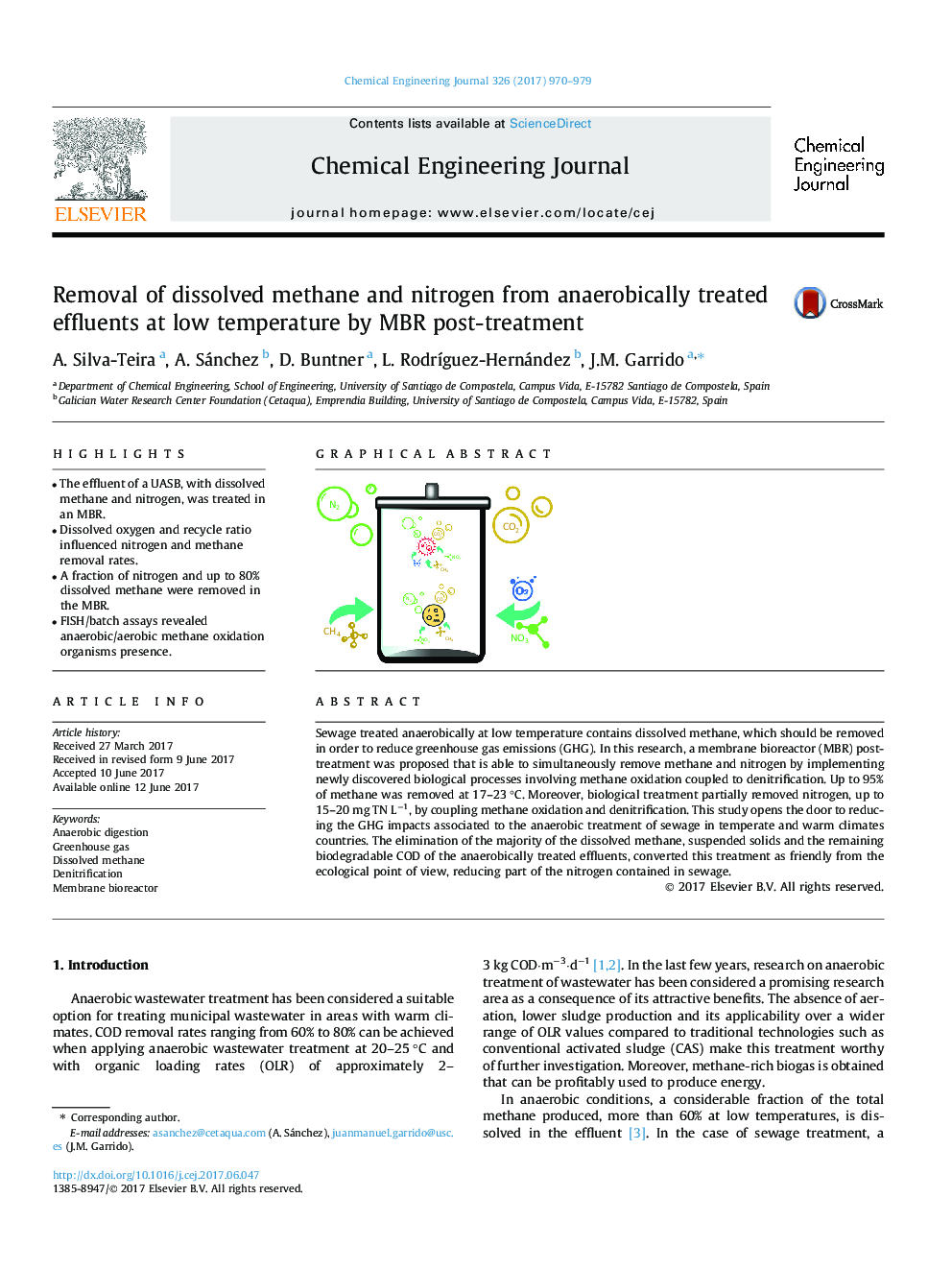| Article ID | Journal | Published Year | Pages | File Type |
|---|---|---|---|---|
| 6465530 | Chemical Engineering Journal | 2017 | 10 Pages |
â¢The effluent of a UASB, with dissolved methane and nitrogen, was treated in an MBR.â¢Dissolved oxygen and recycle ratio influenced nitrogen and methane removal rates.â¢A fraction of nitrogen and up to 80% dissolved methane were removed in the MBR.â¢FISH/batch assays revealed anaerobic/aerobic methane oxidation organisms presence.
Sewage treated anaerobically at low temperature contains dissolved methane, which should be removed in order to reduce greenhouse gas emissions (GHG). In this research, a membrane bioreactor (MBR) post-treatment was proposed that is able to simultaneously remove methane and nitrogen by implementing newly discovered biological processes involving methane oxidation coupled to denitrification. Up to 95% of methane was removed at 17-23 °C. Moreover, biological treatment partially removed nitrogen, up to 15-20 mg TN Lâ1, by coupling methane oxidation and denitrification. This study opens the door to reducing the GHG impacts associated to the anaerobic treatment of sewage in temperate and warm climates countries. The elimination of the majority of the dissolved methane, suspended solids and the remaining biodegradable COD of the anaerobically treated effluents, converted this treatment as friendly from the ecological point of view, reducing part of the nitrogen contained in sewage.
Graphical abstractDownload high-res image (56KB)Download full-size image
